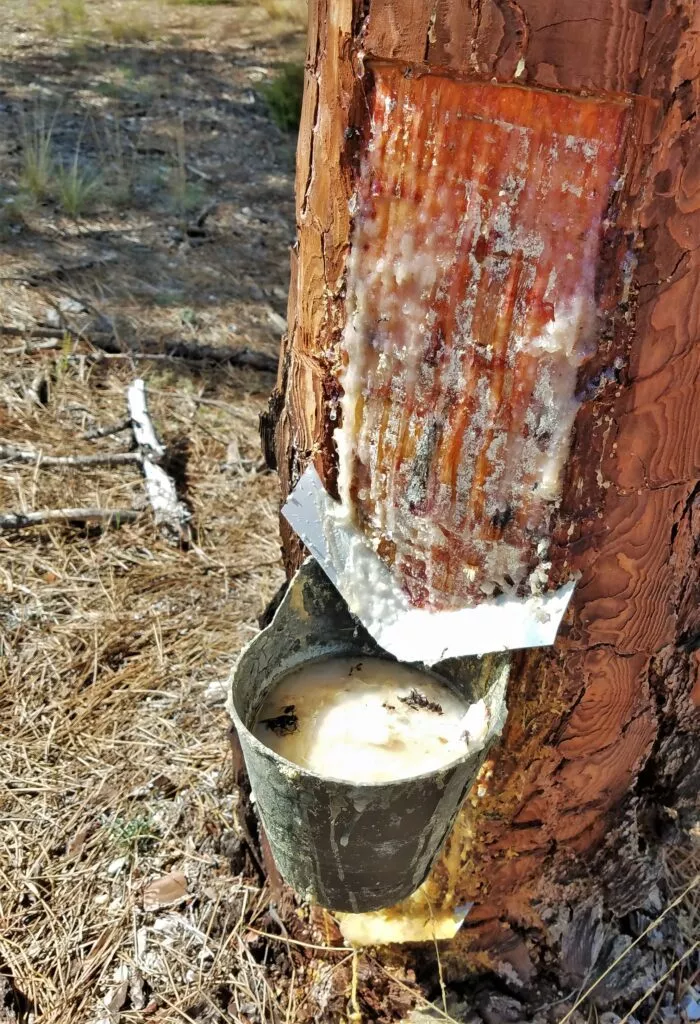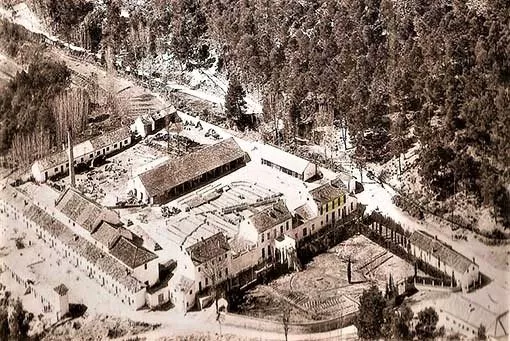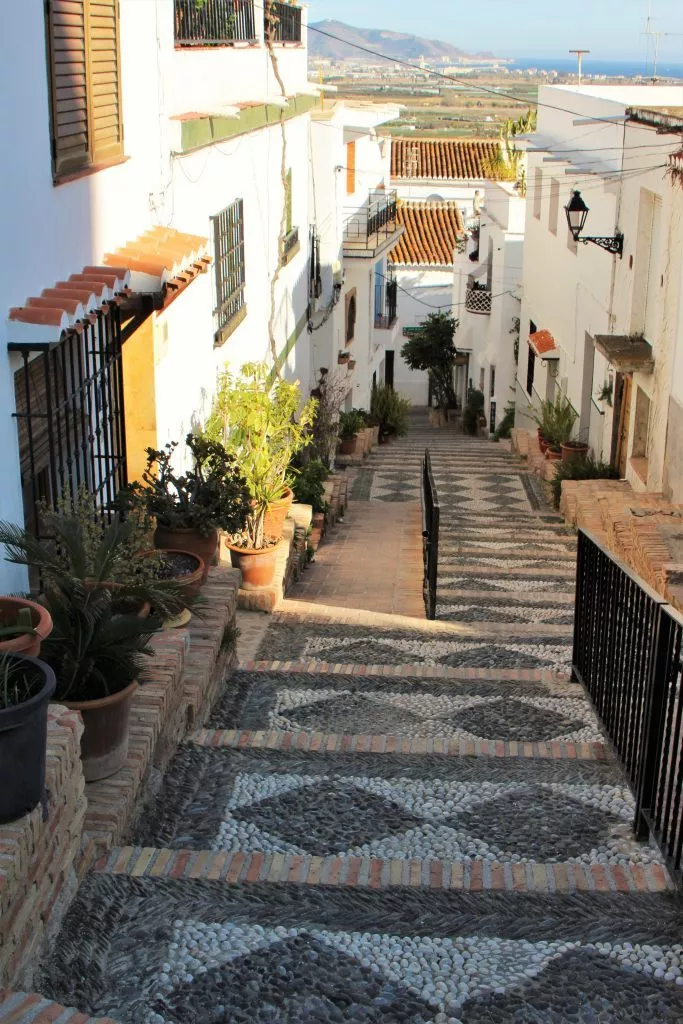Arenas del Rey discover the last resinera in Andalucia
Until the 1970s, La Resinera in Arenas del Rey was home to the resin industry in southern Andalucia
In this article you will find the essential information to visit the resinera in Arenas del Rey :
- A few words about the resinera in Arenas del Rey
- Forest exploitation in the Sierra de Almijara
- Origins of the Resinera de Fornes
- The Resinera de Fornes from the 1950s onwards
- Resinera de Fornes and the Guardia Civil
- The 1975 fire in the Sierra de Almijara
- What to see around Arenas del Rey
- Map with Arenas del Rey and the Sierra de Almijara
- A good idea for accommodation
- Some useful links (rental car, other ideas for visits)
A few words about the resinera in Arenas del Rey
This little-known industrial site, the resinera de Fornes located in Arenas del Rey, is unique. It is directly linked to the inhabitants of the Sierra de Almijara. A place to discover!
In the article you will find old photos as well as recent ones.
The Sierra de Almijara crosses the provinces of Granada and Malaga. More precisely, it concerns the comarques of Alhama and Axarquia. It roughly encompasses the villages of Alhama de Granada to Nerja. The Sierra de Almijara forms part of the Sierras de Tejeda, Almijara and Alhama Natural Park.
At the bottom of the article, you will find all the locations on a map.
Industrial tourism in Andalucia: sugar cane industry but also resin industry
One often thinks of the sugar cane industry, with the azucareras that can still be seen along the Costa del Sol or the Costa Tropical. However, this industry had its glory days in the 20th century, and employed up to 300 workers, depending on the period between 1902 and 1975.


Forest exploitation in the Sierra de Almijara
This former industrial site was dedicated to forestry, with one part dedicated to the sawmill and the other to the extraction of resins from the pines of the Sierra de Almijara.
The resin harvested, was distilled. Rosin (solid residue) and turpentine (liquid residue) were obtained.



Products made from the production of Resinera
Turpentine has many uses, in oil paints or as a stain remover or cleaner.
Rosin also has many uses. It was used as a component in glue. Rosin is also used in some paints.
It is also used by players of bowed string instruments (the wick of bows is rubbed with rosin to ensure the best vibration of the strings). However, rugby and handball players have also had the opportunity to put it on their hands before a competition !
Generally speaking, what was produced at the Resinera was used to make varnish, paint and soap.
The origins of the Resinera de Fornes
Originally, the Resinera de Fornes, as in other places, carried out this activity in an artisanal way and simply allowed for survival. From 1902 onwards, it became an industrial activity and improved the living standards of the workers.
Until 1936, the workers lived in shacks in the vicinity of the factory.


La Resinera during the civil war
Production came to a virtual standstill during the Civil War and also during the Second World War.
The Guardia Civil was watching the whole of the mountains for Republican rebels (Roberto’s guerrilla) hiding there. All inhabitants of the mountains found themselves trapped and deprived of movement. The mountains were gradually emptied.
Some even left their homes to go to the coast. For others, the village was completely closed and emptied of its population. The dramatic story of the village of El Acebuchal, just outside Frigiliana, is very interesting.
La Resinera de Fornes from the 1950s
During this period, the site became like a small village. Houses were built all along the factory walls. These were the best years of production.

A chapel and a school will even complete the site. This is a case of a factory that has become a village!

Resinera de Fornes and the Guardia Civil
The Guardia Civil built its barracks a hundred metres from the factory. It is also in ruins today:




It was a real “economic lung” for the region. Several villages had activities related to the Resinera. For example, La Venta del Vicario was the pottery site where the clay pots were made to recover the resin production.
The 1975 fire in the Sierra de Almijara
In 1975, a huge fire destroyed 12,000 hectares of forest belonging to the factory.
Locally, 1975 is known as the year of the “quemao”. It is known that this fire is of criminal origin. In fact, several fires started simultaneously. These fires took place in Arenas del Rey, Jatar, Competa, Frigiliana and even Nerja. The fire…The fires were a fatal blow to the Resinera. It closed for good in 1982.
The Junta de Andalucía bought the site in 1986. It is a very interesting place for “industrial tourism”.



This is the only Resinera that can be seen today in Andalucia. All the buildings seen in the photos can be seen on the site (except for the workers’ houses which have disappeared). All other Resinera have totally disappeared in Andalucia.
Finally, if you visit in mid-August, you can also enjoy the Feria :

What to see in the surroundings of Arenas del Rey
Arenas del Rey is of course worth a visit to the Resinera. However, the reservoir of Los Bermejales which is also located in the municipality of Arenas del Rey is a must-see. The landscapes are magnificent.



Ideas for visits to the province of Granada

Arenas del Rey is only 25km from the fabulous Alhama de Granada.

On the coast, there is the town of Salobrena, nicknamed “La Perla de la Costa Tropical”.

At the foot of the Sierra Nevada, there are the fabulous villages of Pampaneira and Capileira in the Alpujarra.
Map with Arenas del Rey and Sierra de Almijara
A good idea for accommodation
In this link, you’ll find a cortijo where sleeping (with view on the famous reservoir) : cortijo rural el Molinillo
Below, all the accommodation on offer in the charming little town of Alhama de Granada, just outside Arenas del Rey.
Some useful links (car hire, ideas for visits)
Easy and economical bookings
If you are in Andalucia as part of a tour with several major cities to visit, here are some links that may be of interest:
Seville
Seville, the capital of Andalucia, is a city full of treasures to discover and monuments to visit.

Here you will find everything you can see in Seville in 3 days. And for those who will stay longer you will also find information on secret Seville and the Santa Cruz and Triana districts.
Cadiz

Visit Cadiz, a city with an incredible past and great beauty, on the Costa del la Luz.
Malaga
When you reach the Costa del Sol you will find in this link all must-sees in Malaga :

Granada
Discover what to see in Granada, and visit the Albaicin and Sacromonte districts:

Cordoba
And of course, visit Cordoba, the caliphate city, and the Juderia district

Find more ideas for visits to authentic Andalusia: see the blog pages on Andalusia.
Here is the link to receive our newsletter from the andaluciamia.com blog
Here are the latest articles on Andalucia
-
Interactive map of Andalucia with best places to see

An interactive map of Andalucia to discover the sites to see around your holiday destination or to prepare a tour or road-trip.
-
Visit Olula del Rio, the Mujer de Almanzora and the museum

Olula del Rio see its 3 wonders: an extraordinary marble sculpture, a surprising museum and an incredible photography centre.
-
Fiesta del Queso in Zuheros Cordoba

Discover the incredible Cheese Festival – Fiesta del Queso in Zuheros, one of the most beautiful white villages in Spain.
-
What to see in Baeza? – The 10 places to visit –

What to see in Baeza one of Andalucia’s must-see towns. Discover the best to see in Baeza, a UNESCO World Heritage Site.


